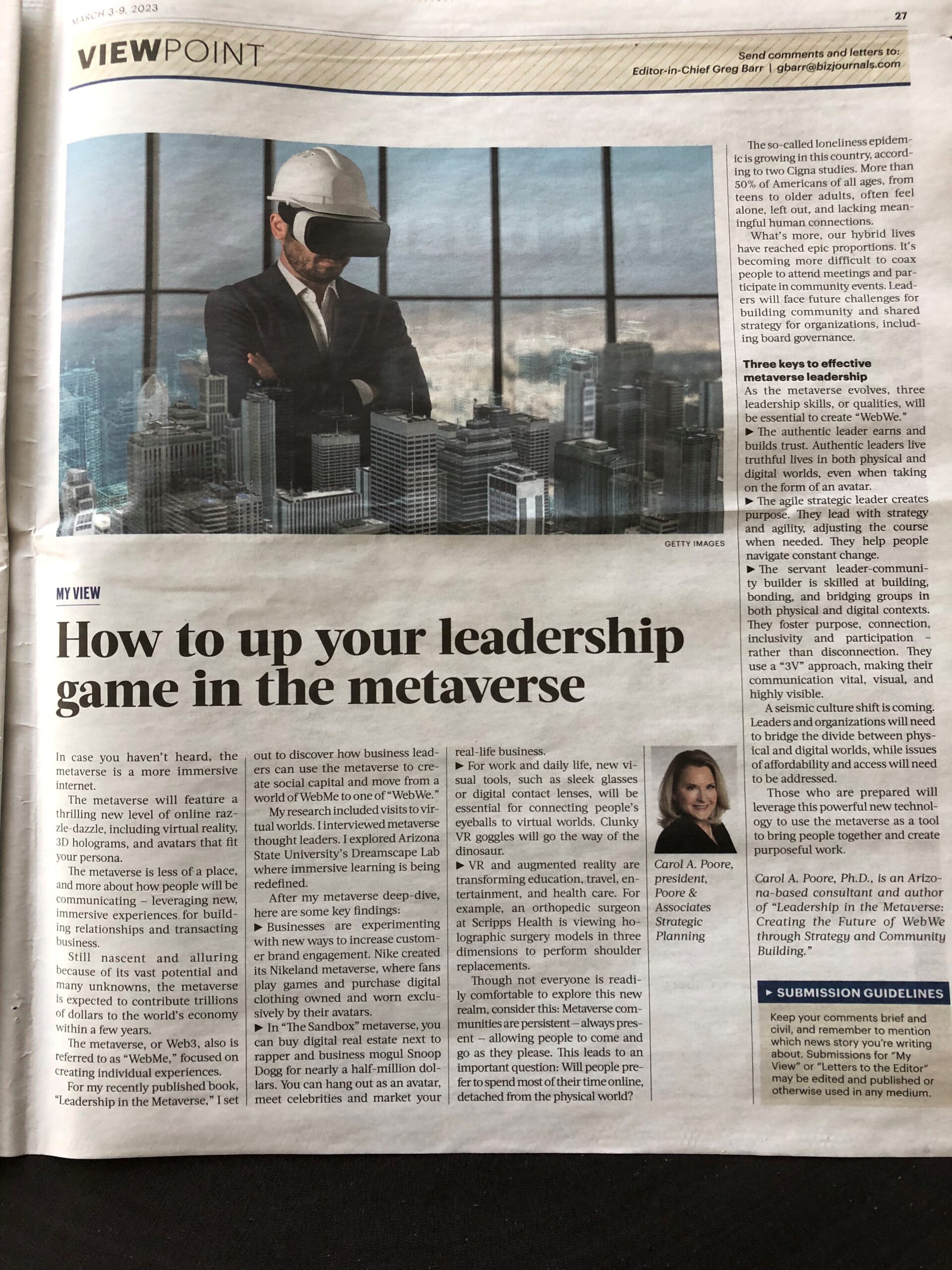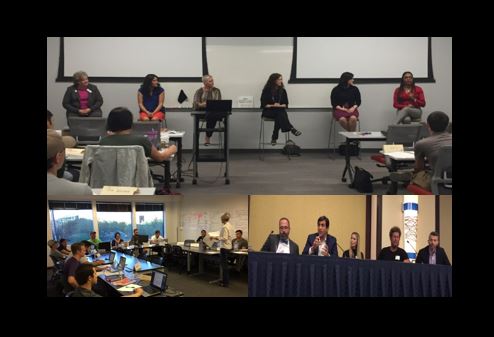In case you haven’t heard, the metaverse is a more immersive internet.
The metaverse will feature a thrilling new level of online razzle-dazzle, including virtual reality (VR), 3D holograms, and avatars that fit your persona.
The metaverse is less of a place, and more about how people will be communicating – leveraging new, immersive experiences for building relationships and transacting business.
Still nascent and alluring because of its vast potential and many unknowns, the metaverse is expected to contribute trillions of dollars to the world’s economy within a few years.
The metaverse, or Web3, also is referred to as “WebMe,” focused on creating individual experiences.
For my recently published book, Leadership in the Metaverse, I set out to discover how leaders can use the metaverse to create social capital and move from a world of “WebMe” to one of “WebWe.”
My research included visits to virtual worlds. I interviewed metaverse thought leaders. I explored Arizona State University’s Dreamscape Lab where immersive learning is being redefined.
After my metaverse deep-dive, here are some key findings.
Incredible Innovation
- Businesses are experimenting with new ways to increase customer brand engagement. Nike created its Nikeland metaverse, where fans play games and purchase digital clothing owned and worn exclusively by their avatars.
- In The Sandbox metaverse, you can buy digital real estate next to Snoop Dogg for nearly a half-million dollars. You can hang out as an avatar, meet celebrities, and market your real-life business.
- For work and daily life, new visual tools, such as sleek glasses or digital contact lenses, will be essential for connecting people’s eyeballs to virtual worlds. Clunky VR goggles will go the way of the dinosaur.
- VR and augmented reality are transforming education, travel, entertainment, and healthcare. For example, an orthopedic surgeon at Scripps Health is viewing holographic surgery models in three dimensions to perform shoulder replacements.
Human challenges
- The “Loneliness Epidemic” is growing, according to two Cigna studies. More than 50 percent of Americans of all ages, from teens to older adults, often feel alone, left out, and lacking meaningful human connections.
- Our hybrid lives have reached epic proportions. It’s becoming more difficult to coax people to attend meetings and participate in community events. Leaders will face future challenges for building community and shared strategy for organizations, including board governance.
- Metaverse communities are persistent – always present – allowing people to come and go as they please. This leads to an important question: Will people prefer to spend most of their time online, detached from the physical world?
Three keys to effective metaverse leadership
As the metaverse evolves, three leadership skills, or qualities, will be essential to create WebWe.
The Authentic Leader earns and builds trust. Authentic leaders live truthful lives in both physical and digital worlds, even when taking on the form of an avatar.
The Agile Strategic Leader creates purpose. They lead with strategy and agility, adjusting the course when needed. They help people navigate constant change.
The Servant Leader-Community Builder is skilled at building, bonding, and bridging groups in both physical and digital contexts. They foster purpose, connection, inclusivity and participation – rather than disconnection. They use a “3V” approach, making their communication Vital, Visual, and highly Visible.
A seismic culture shift is coming. Leaders and organizations will need to bridge the divide between physical and digital worlds. (Affordability and access are topics for another discussion.)
Those who are prepared will use the metaverse as a tool to bring people together, create purposeful work, and leverage this powerful new technology.




